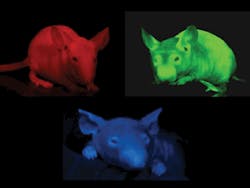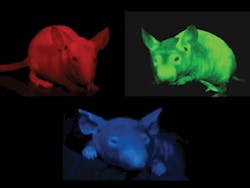LEDs system promising for oral cancer detection in developing countries
More than two-thirds of cases and three-quarters of deaths due to oral cancer occur in developing countries. To address the need for low-cost, portable imaging, Mohammed S. Rahman of Rice University (Houston, TX) and Tata Memorial Hospital (TMH; Mumbai, India) has developed a multimodal system for screening and detection of oral cancer in high-risk populations in low-resource and remote settings.
The 3-lb, battery-powered instrument was recently evaluated in a clinical study in India.1 It acquires near-real-time digital images and consists of a modified commercial headlamp system that uses light-emitting diodes (LEDs) to illuminate the oral mucosa. A blue LED with an excitation peak at 455 nm enables fluorescence imaging; a white LED with an illumination range of 400 to 700 nm provides for reflectance imaging. Images can be observed visually or captured digitally through a set of optical filters using an integrated, miniature charge-coupled-device (CCD) camera. The system connects to a laptop via FireWire interface.
The study, conducted at TMH, involved patients referred to the Cancer Prevention Clinic because of suspicious oral lesions and those awaiting head and neck surgery, along with healthy volunteers–some of whom are tobacco users. Reflectance and fluorescence images were obtained from 261 sites in the oral cavity from 76 patients and 90 sites in the oral cavity from 33 normal volunteers. Quantitative image features were used to develop classification algorithms to identify neoplastic tissue, using clinical diagnosis of expert observers as the gold standard. Using the ratio of red to green autofluorescence, the algorithm identified tissues judged clinically to be cancer or clinically suspicious for neoplasia with a sensitivity of 90% and a specificity of 87%.
Results suggest that the performance of this simple, objective, low-cost system has the potential to improve oral screening efforts, especially where technology has typically been unavailable.
- M. Rahman et al., Head & Neck Oncology 2010, 2:10
More Brand Name Current Issue Articles
More Brand Name Archives Issue Articles

